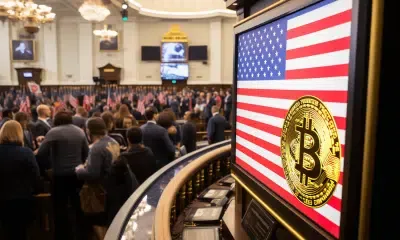
Understanding How Cardano Transactions Become Permanent with Ouroboros
When we talk about digital money systems, knowing a transaction is truly “final” is a big deal. It means that once recorded on the blockchain, nobody can change or undo it. This isn’t quite the same as a “transaction confirmation,” which just tells you it’s been checked and added to a new batch (a block) of transactions. Confirmations give you growing certainty, but finality is the absolute lock, crucial for making sure a blockchain network stays safe and dependable.
Confirmation vs. Finality: What’s Really Different?
Imagine you send some crypto on a network like Cardano. First, your transaction goes out and waits in a sort of holding area, the mempool, with other pending transactions. Then, the network’s validators—on Cardano, these are Stake Pool Operators (SPOs) in its Proof-of-Stake setup—grab transactions, check if they follow all the rules, and bundle them into a fresh block. When this new block gets chained on, that’s your transaction’s first thumbs-up, or confirmation. Every block added after that one piles on more confirmations, making your transaction more secure.
But even with a stack of confirmations, a transaction might not be totally set in stone yet. Finality is when it hits the “no turning back” point; it’s completely unchangeable. This is super important to stop anyone from spending the same money twice and to keep financial deals and smart contract actions honest. How blockchains get to this point of finality, and how long it takes, really depends on their specific agreement system (consensus protocol).
| What It Is | Transaction Confirmation | Transaction Finality |
|---|---|---|
| Meaning | It’s been checked over and put into a block. | It’s locked in for good, permanently on the record. |
| How It Feels | Security builds up as more blocks get added. | It’s a done deal, absolutely unchangeable. |
| Can It Be Undone? | Possibly, especially if it’s fresh and in certain systems. | Nope, it’s irreversible. |
| When It Happens | Pretty soon after you send it. | How long this takes can differ a lot depending on the blockchain and how it agrees on things. |
Blockchains can offer different flavors of finality. Probabilistic finality is what you see in Proof-of-Work (PoW) chains like Bitcoin. Here, the more confirmations pile up, the tinier the chance of a reversal gets, but it never quite hits zero. For Bitcoin, six confirmations, which usually take about an hour, are generally seen as good enough to call it practically final. On the other hand, absolute or deterministic finality, common in Proof-of-Stake (PoS) and Byzantine Fault Tolerance (BFT) systems, means that once certain things happen, a transaction is 100% final, no question. You might also hear about economic finality, where it would cost so much to reverse a transaction that it just wouldn’t make sense for anyone to try.
Cardano’s Ouroboros: Getting a Handle on Its Probabilistic Lock-In
Cardano makes transactions final using its family of Ouroboros Proof-of-Stake agreement methods. Ouroboros delivers a very strong type of probabilistic finality; essentially, the odds of a transaction being undone shrink to almost nothing as more blocks get tacked onto the chain.
How Ouroboros Makes Transactions Stick:
- Proof-of-Stake (PoS) Backbone: People who create blocks (called slot leaders) get picked based on how much ADA (Cardano’s own crypto) they’ve “staked” or pledged to the network.
- Time Divided: Epochs and Slots: Cardano’s clock is split into epochs (right now, each is 5 days long). Epochs are then broken down into tiny slots (currently 1 second each). A new block can be made in every slot, though you’ll typically see one about every 20 seconds on average.
- Picking Slot Leaders: For every slot, a slot leader is chosen almost randomly from the stake pools, with their chances tied to their stake size, to make the next block.
- The ‘k’ Security Number: There’s a key network setting, ‘k’, which tells you how many blocks deep a transaction needs to be before the chain is seen as unchangeable. Right now, k is 2160 blocks. This suggests that any block that’s 2160 blocks buried in the chain can’t be rolled back, pretty much guaranteeing it’s final. This “stability window” could mean waiting about 12 to 36 hours for this top-tier assurance with Ouroboros Praos, the version running now. But you usually feel pretty confident much, much sooner.
- Longest Chain Wins: Cardano computers always follow the longest valid chain as the official one.
Ouroboros Through the Ages and What It Means for Finality:
The Ouroboros system has gone through a few upgrades, each improving things like safety and how much it can handle, which indirectly affects how finality works:
- Ouroboros Classic: This was the original PoS design.
- Ouroboros Praos: This is the one running now. Praos beefed up security against clever attackers and tweaked how slot leaders are picked. It’s the foundation for the current probabilistic finality setup.
- Ouroboros Genesis: This made it safer for new computers to join the network, letting them get up to speed without needing to trust pre-set checkpoints.
- Ouroboros Chronos: This version focused on getting network time perfectly synced, which is vital for reliable agreement and, by extension, finality.
- Ouroboros Leios: This is a big research project aiming to let the network handle way more transactions by processing them and blocks at the same time. While it doesn’t directly change the main finality rules, being more efficient can help things feel final faster.
- Ouroboros Peras: This one is being built to make transaction settlement much quicker, maybe down to about two minutes. It adds a voting system based on stake, where SPOs can vouch for blocks. This changes how the chain is chosen, favoring the “heaviest” chain (the one with the most endorsements).
The Journey of a Cardano Transaction to Finality – Step by Step:
- Someone sends a transaction.
- A slot leader puts it into a new block.
- This block spreads out across the network.
- Other computers check the block and add it to their copy of the chain.
- With every new block that follows, the transaction gets harder and harder to change.
- After a certain amount of confirmations (with the ‘k’ number providing the ultimate backup), the transaction is seen as practically final.
What Affects How Long Finality Takes on Cardano:
- Network Speed: How fast blocks travel between computers.
- Block Creation Pace: On average, a block shows up every 20 seconds.
- The ‘k’ Security Number: Currently 2160 blocks for the strongest guarantee.
- Protocol Version: Newer versions like Peras are aiming for faster settlement.
- Network Traffic: If it’s busy, transactions might have to wait longer to get into a block. Cardano’s block size can adjust to help with this.
- Slot Leader Uptime: If the chosen slot leader is offline or messes up, it can cause a small hiccup.
Finality Time: What Can You Expect?
Even though that ‘k’ number points to a 12-36 hour wait for the protocol’s most airtight definition of unchangeable, most folks experience practical finality way quicker. Many will tell you a transaction usually gets into a block in about 20 seconds. Settlement, meaning it’s extremely unlikely to be reversed, might take anywhere from 2 to 15 minutes, based on how busy the network is and how many confirmations whoever you’re dealing with wants to see. For example, some crypto exchanges might want 15 confirmations (which could be around 10 minutes) or even more. The Eternl wallet uses a color system: 0-9 confirmations are red, 10-19 are yellow, and 20+ are green. The upcoming Ouroboros Peras upgrade is specifically designed to cut this practical settlement wait down to about two minutes.
Cardano’s Finality Compared to Other Big Blockchains
| Blockchain | Typical Time to Feel “Final” | Type of Finality | Quick Notes |
|---|---|---|---|
| Cardano | 5-20 mins (practical); ~12-36h (k-deep lock) | Probabilistic | Uses Ouroboros Praos. Peras is aiming for ~2 min settlement. ‘k’=2160 blocks gives the strongest assurance. |
| Bitcoin | ~60 mins (for 6 confirmations) | Probabilistic (PoW) | What most exchanges accept as standard. |
| Ethereum (PoS) | ~12-15 mins | Deterministic (Gasper) | Needs two epochs (about 12.8 mins) to be considered justified and then finalized. |
| Solana | ~1-2.5s (hopeful); up to ~13s (truly final) | Deterministic (Tower BFT) | Uses Proof-of-History (PoH) to order things fast. |
| Polkadot | ~12-60 secs | Deterministic (GRANDPA) | Its GRANDPA system finalizes batches of blocks together. |
| Avalanche | ~1-3 secs | Deterministic | A novel agreement method with quick, leaderless voting. |
These times are just estimates and can change with network conditions and how “finality” is defined.
Looking at the bigger picture, Cardano’s Ouroboros really focuses on security that can be proven and keeping things decentralized. While its day-to-day finality isn’t lightning-fast like Avalanche or Solana, it provides a solid, mathematically checked method. Bitcoin goes for maximum security, which means slower finality. Ethereum’s Proof-of-Stake strikes a balance with its deterministic promises. Solana and Avalanche are built for speed and handling lots of transactions, often making different choices about validator computers and possible centralization risks. Polkadot offers deterministic finality through its main Relay Chain to all the chains connected to it.
The ‘k’ Parameter: Cardano’s Guarantee of No Reversals
That security number ‘k’ in Cardano is a cornerstone. It basically says any block that’s ‘k’ blocks deep in the chain is set in stone. With ‘k’ at 2160 right now, the protocol promises that no alternative versions of the blockchain (forks) can last longer than ‘k’ blocks. This makes sure that if you wait long enough (the “stability window” linked to a formula involving ‘k’, roughly 36 hours), the chain’s state is absolutely, positively irreversible. This number also subtly guides how stake pools grow, helping to spread out the network.
Key Moments in History and Their Effect on Finality
Cardano’s growth has happened in stages, with important periods shaping the network:
- Byron (Kicked off Sept 2017): The very beginning. Early talks about finality revolved around Ouroboros’s initial security demonstrations. Practical finality took minutes to hours, and the ‘k’-deep lock-in could take a day.
- Shelley (Went live July 2020): This brought full decentralization with the community running stake pools. It didn’t drastically alter Ouroboros Praos’s finality system but set the stage for performance boosts.
- Goguen (Launched Sept 2021): This turned on smart contracts. More network action sometimes caused traffic jams, affecting how long it took to reach finality, but not the underlying probabilistic guarantees.
- Basho (Happening now): All about scaling up.
- Vasil Hard Fork (Sept 2022): Rolled out improvements like Reference Inputs (CIP-31), Inline Datums (CIP-32), and Reference Scripts (CIP-33). These helped transactions flow better and made scripts more efficient, which indirectly helps blocks get included faster and thus speeds up the journey to finality.
- The work on Ouroboros Peras and Ouroboros Leios is part of this phase, directly aiming to quicken settlement and boost transaction capacity, respectively.
- Hydra (Layer 2): This aims for almost instant finality within its own off-chain channels, massively increasing how many transactions per second (TPS) can be handled.
What’s Coming Up: Sharper Finality and More Throughput
Cardano has several big things planned:
- Ouroboros Leios: Built to seriously increase TPS by letting the network process transactions side-by-side. Early tests suggest it could handle tens of thousands of TPS.
- Ouroboros Peras: As noted, this is aiming for about a 2-minute settlement time on the main blockchain.
- Hydra: This Layer 2 approach uses off-chain “Hydra Heads” for super-fast transaction handling, potentially hitting over 1 million TPS if many Heads are used, with transactions becoming final almost instantly within a Head.
- Input Endorsers: The idea here is to separate checking transactions from making blocks. This could allow a steady flow of pre-approved transactions and potentially much higher TPS on the main chain.
- Mithril: This is a stake-based signature system that helps new Cardano nodes get up and running faster and makes lightweight clients possible, which indirectly supports a smoother network.
Together, these upgrades are meant to make Cardano much faster and better at handling more activity, improving how users experience finality.
What This Means for Apps Built on Cardano
Cardano’s finality features have specific effects on different uses:
- DeFi (Decentralized Finance): While Cardano’s DeFi world is growing, the current mainnet finality (before Peras comes along) can be a bit slow for super fast trading. Hydra looks set to bring the speed needed for those kinds of apps.
- NFTs (Non-Fungible Tokens): Knowing ownership has truly transferred is key. Probabilistic finality means users need to wait for enough confirmations. People are also looking at Hydra for running efficient NFT sales.
- Instant Payments: The base layer’s ~20-second block time and longer settlement aren’t perfect for paying for a coffee right now. Hydra Pay and Ouroboros Peras are being developed to tackle this.
- Business Solutions: Cardano’s strong focus on security and predictable transaction results (thanks to its EUTXO model) are appealing. Faster settlement from Peras will make it even better for important business deals.
What Users and Developers Should Keep in Mind
Users mostly see finality as how long they wait for confirmations in their wallets. While the ‘k’-deep finality is a longer affair, everyday transactions settle much more quickly in practice. Developers need to build their apps knowing about probabilistic finality, choosing sensible confirmation numbers, and clearly telling users what’s happening with their transactions. Layer 2 options like Hydra give a path for apps that need things to be final almost instantly.
The Money Behind Finality
Cardano’s finality is backed by financial motivations:
- Staking Rewards: People who hold ADA can “stake” their tokens to help run the network and earn rewards, making the network more secure.
- Delegation: Users can pass on their staking power to SPOs, getting more people involved.
- SPO Rewards: Operators get paid for reliably producing blocks. The ‘k’ parameter also helps keep pools from getting too big, encouraging decentralization.
- Transaction Fees: These add to the rewards, giving another reason to keep the network secure.
- No Slashing (For Now): Unlike some PoS chains, Cardano doesn’t currently take away stakes for bad behavior. It banks on game theory, where playing honestly is the smartest move, and the risk of losing future rewards and reputation keeps people in line.
Checking and Watching Transaction Finality
Users and developers have a few ways to see what’s going on:
- Blockchain Explorers: Sites like CardanoScan.io, Cexplorer.io, AdaStat.com, Pool.pm, and the official Cardano Explorer let you follow transactions and see their confirmations.
- Wallet Apps: Most wallets (like Yoroi or Eternl) show you transaction status and how many confirmations they have.
- Developer Tools: Tools like
cardano-cli, Ogmios, Lucid, PyCardano, and other code libraries let you interact with the network and monitor it. Node-watching tools such as Cardano-Tracer and Oura give real-time information.
How the Market Sees It, Adoption, and Value
The market often balances Cardano’s strong security against the desire for speed. While its careful, step-by-step development is valued for long-term health, it has sometimes been seen as slow next to some rivals. Good news like Peras and Leios usually lifts spirits and ADA’s price, while delays or bad comparisons can do the opposite. How well these upgrades change public perception will be key for more people to start using it.
Clearing Up Some Confusion
A common bit of FUD (fear, uncertainty, and doubt) is that Cardano has “slow finality” because of the ‘k’ parameter. It’s really important to get that ‘k’ is about the ultimate security promise, not the time it takes for everyday transactions to settle. That everyday settlement is much faster and is going to get even better with Peras. Cardano’s eUTXO model and Layer 2 systems like Hydra are designed to handle a lot more activity, tackling concerns about TPS.
To wrap it up, Cardano’s way of making transactions final is a complex system built on the provably secure Ouroboros protocol. While its absolute, ‘k’-deep finality takes a while, users find their transactions become practically final pretty quickly. Upgrades on the way, like Ouroboros Peras, Leios, and Hydra, are poised to dramatically improve both settlement times and the network’s overall capacity, further cementing Cardano’s place as a secure, decentralized, and increasingly powerful blockchain platform.




